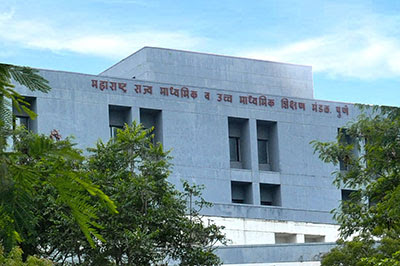Maharashtra to Adopt CBSE Syllabus in State Schools Starting 2025-26 Academic Year

Mumbai, March 22, 2025 – In a landmark move to align state education with national standards, the Maharashtra government has announced that government schools across the state will adopt the Central Board of Secondary Education (CBSE) syllabus starting from the 2025-26 academic year. The decision, revealed by State School Education Minister Dada Bhuse on March 20, 2025, marks a significant shift from the existing Maharashtra State Board of Secondary and Higher Secondary Education (MSBSHSE) curriculum, which currently governs Class X (SSC) and Class XII (HSC) examinations.
A Phased Transition to CBSE
Minister Bhuse outlined that the transition to the CBSE framework will occur in two phases, beginning with government schools in the upcoming academic year. The initiative aims to enhance the quality of education and better prepare students for national-level competitive examinations such as the Joint Entrance Examination (JEE) and the National Eligibility cum Entrance Test (NEET). “This is a progressive step to ensure our students are competitive on a national scale,” Bhuse stated during a press conference in Mumbai. He emphasized that the CBSE curriculum, designed by the National Council of Educational Research and Training (NCERT), will be adapted to include Maharashtra’s history, geography, and the Marathi language, preserving the state’s cultural identity.
To facilitate a smooth transition, the government has committed to providing teacher training programs and updating learning materials to align with CBSE standards. Textbooks adhering to the CBSE pattern will be made available in Marathi by April 1, 2025, ensuring accessibility for students in their native language. “We are not just adopting a syllabus; we are modernizing education while keeping our roots intact,” Bhuse added.
Rationale Behind the Shift
The decision stems from a broader push under the National Education Policy (NEP) 2020 to standardize education across India. Maharashtra’s Steering Committee for the State Curriculum Framework for School Education (SCF-SE) approved the adoption of the CBSE framework for classes 3 to 12, citing the need to equip students with skills and knowledge relevant to a rapidly changing global landscape. BJP MLC Prasad Lad hailed the move as “commendable,” noting that integrating the central education system into the state board will enhance students’ academic and professional opportunities.
Data has shown that students from Maharashtra often lag behind their peers from CBSE-affiliated schools in national competitive exams. BJP MLA Sanjay Upadhyay highlighted this disparity, stating, “In many competitive exams, students from Maharashtra tend to have a lower success rate compared to others. This shift addresses that gap.” The government believes that aligning with CBSE’s rigorous academic standards will provide a competitive edge to students from state-run schools.
Mixed Reactions from Stakeholders
While the announcement has been welcomed by some, it has also sparked debate among educators, politicians, and parents. NCP (SP) working president and Baramati Lok Sabha MP Supriya Sule expressed strong reservations, arguing that the move could undermine the Marathi language and Maharashtra’s unique cultural heritage. In a letter to Minister Bhuse, Sule wrote, “It is painful that the state is adopting the CBSE Board over SSC. This is detrimental to Marathi language and culture. Parents should have the option to choose between boards.” She questioned whether the CBSE curriculum would adequately represent Maharashtra’s history and urged the government to prioritize improving the state board instead.
NCP-SCP MLA Rohit Rajendra Pawar echoed similar sentiments, suggesting that the state board could be enhanced by incorporating practical education and artificial intelligence rather than “copying” CBSE. “We should innovate, not imitate,” Pawar remarked. Teachers, too, have raised logistical concerns. A former head of the Maharashtra State School Principals’ Association, Mahendra Ganapule, pointed out that the existing academic calendar aligns with local weather conditions, such as the delayed reopening in Vidarbha due to extreme heat. “Shifting to an April start could be challenging without adequate preparation,” he cautioned.
Implementation Challenges and Preparations
The transition poses significant logistical challenges, including retraining thousands of teachers and ensuring infrastructure readiness. The Maharashtra government has assured that it will provide comprehensive support, including workshops and resources, to ease the process. The academic calendar will also shift from the current June-to-April schedule to an April-to-March timeline, mirroring the CBSE pattern. This adjustment aims to synchronize state schools with national boards, allowing for timely syllabus completion and examination schedules.
Education experts have noted that the adoption of NCERT textbooks, already widely used in CBSE schools, will streamline content delivery. However, the state plans to contextualize these materials with local references to ensure relevance for Maharashtra’s students. “The goal is to balance national alignment with regional identity,” said Rahul Rekhawar, Director of the State Council of Educational Research and Training (SCERT).
A Step Toward Educational Reform
The adoption of the CBSE syllabus is part of a larger initiative to modernize Maharashtra’s education system. With the state’s literacy rate standing at 82.34% (as per the latest census), the government aims to further elevate educational outcomes. The move has been positioned as a response to the growing demand for a curriculum that prepares students for both national and global opportunities.
As the 2025-26 academic year approaches, all eyes will be on Maharashtra to see how this ambitious reform unfolds. While it promises to elevate educational standards, its success will depend on effective implementation and addressing the concerns of those who fear it may dilute the state’s distinct educational identity. For now, the debate continues, with stakeholders weighing the benefits of standardization against the preservation of local traditions.
